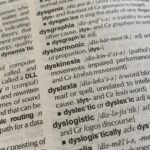Navigating the world of education can be a daunting task for any parent, but when your child is struggling with learning difficulties such as ADHD or Dyslexia, the journey can feel overwhelming. These challenges often create barriers that make traditional learning methods ineffective, leading to frustration for both the child and the parent. It’s crucial to find an educational approach that not only addresses these challenges but also aligns with your child’s unique learning style.
One such approach is the Barton System of Reading and Spelling, a structured, multi-sensory program specifically designed to help students with Dyslexia and other related learning disabilities. The Barton System is renowned for its effectiveness in improving reading, writing, and spelling skills, making it an invaluable tool for students who find traditional classroom settings challenging.
In this post, we’ll dive deep into the Barton System, exploring how it works, why it’s effective, and how it can transform your child’s learning experience. By understanding this system, you can make an informed decision about whether it’s the right fit for your child’s educational needs.
Understanding the Barton System
The Barton System of Reading and Spelling is a specialized tutoring program created by Susan Barton, an expert in Dyslexia and other learning disabilities. The system was developed to provide a solution for students who struggle with reading and spelling, particularly those diagnosed with Dyslexia. It is rooted in the Orton-Gillingham approach, a well-established method that has been helping students with learning disabilities since the 1930s.
The Barton System is designed to be highly structured and sequential, with each level building on the previous one. This methodical approach ensures that students fully grasp each concept before moving on to the next, reducing the risk of gaps in knowledge that could hinder future learning. The program is also multi-sensory, meaning it engages multiple senses (sight, sound, and touch) to reinforce learning, making it particularly effective for students who do not thrive with traditional teaching methods.
A key feature of the Barton System is its focus on phonemic awareness—the ability to hear, identify, and manipulate individual sounds in spoken words. This skill is fundamental to reading success, yet many students with Dyslexia struggle with it. The Barton System provides intensive practice in this area, helping students to develop the phonemic awareness necessary for reading fluency.
Key Components of the Barton System
Phonemic Awareness
Phonemic awareness is the cornerstone of the Barton System. It is the ability to recognize and manipulate the individual sounds, or phonemes, that make up words. Without strong phonemic awareness, reading can be an uphill battle, particularly for students with Dyslexia. The Barton System begins with an intensive focus on phonemic awareness, using a variety of activities and exercises to help students master this crucial skill.
For example, students might engage in activities where they break down words into individual sounds or blend sounds together to form words. These exercises are designed to be fun and engaging, helping students build their skills without feeling overwhelmed. By the time they complete the phonemic awareness level of the Barton System, students have a strong foundation that will support their future reading and spelling success.
Multi-Sensory Learning
One of the reasons the Barton System is so effective is its use of multi-sensory learning. This approach engages multiple senses—sight, sound, and touch—simultaneously, helping to reinforce learning and making it easier for students to retain information. For example, when learning to spell a word, a student might see the word, say it out loud, and trace it with their finger. This combination of visual, auditory, and kinesthetic input helps solidify the learning in the student’s brain.
Multi-sensory learning is particularly beneficial for students with ADHD and Dyslexia because it provides multiple pathways for learning. If a student struggles with visual learning, they can rely on auditory or kinesthetic cues to help them understand the material. This flexibility makes the Barton System adaptable to a wide range of learning styles, ensuring that every student can find success.
Sequential Instruction
The Barton System is carefully sequenced, with each level building on the one before it. This sequential approach ensures that students fully understand each concept before moving on to the next. In traditional classroom settings, students with learning difficulties often struggle to keep up, leading to gaps in their understanding. The Barton System prevents this by requiring mastery of each level before advancing, giving students the time and support they need to succeed.
This step-by-step method is particularly important for students with Dyslexia, who may need more time and practice to grasp certain concepts. By progressing at their own pace, students can build confidence in their abilities and develop a solid foundation for future learning.
Explicit Instruction
Explicit instruction is a teaching method that involves clear, direct teaching of specific skills. In the Barton System, this means breaking down each concept into manageable steps and teaching those steps in a clear and straightforward manner. For example, when teaching spelling, the tutor might break down a word into its individual sounds and teach the student how to spell each sound before combining them into a full word.
This approach is particularly effective for students with ADHD and Dyslexia, who may struggle with more implicit or abstract teaching methods. By providing clear, step-by-step instruction, the Barton System helps students understand exactly what they need to do to succeed, reducing confusion and frustration.
Go to Part Two of Understanding the Barton System: How It Can Transform Your Child’s Learning Experience





